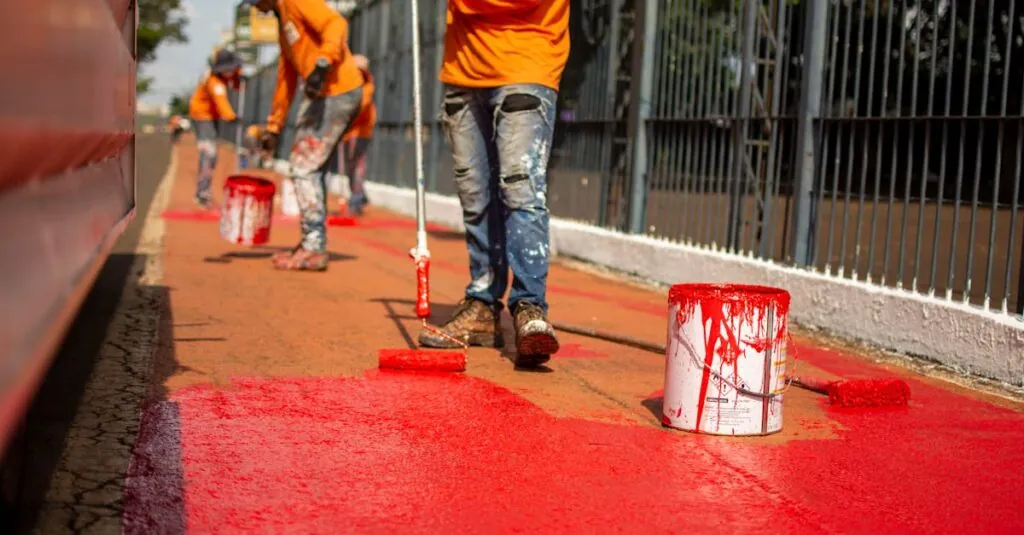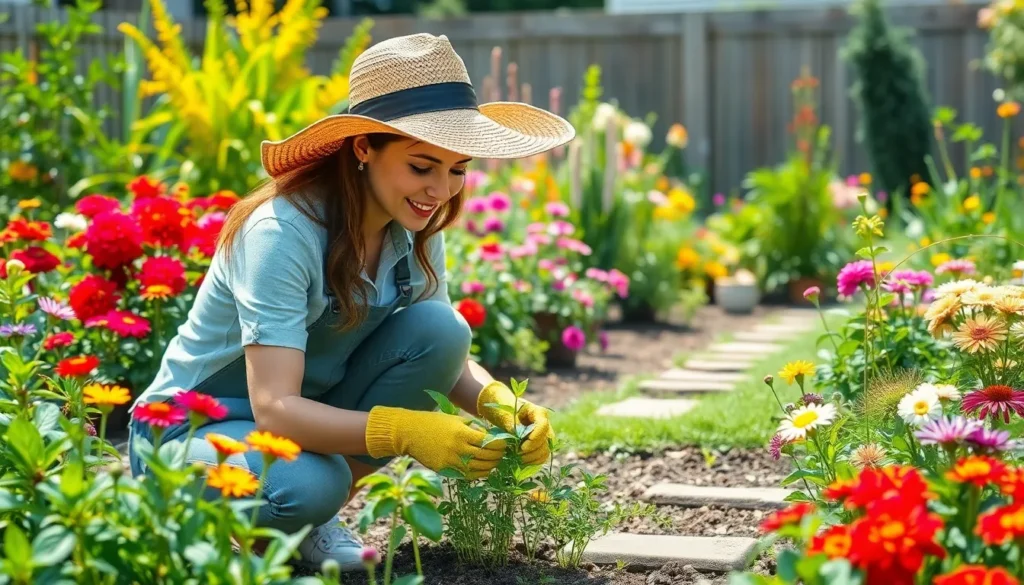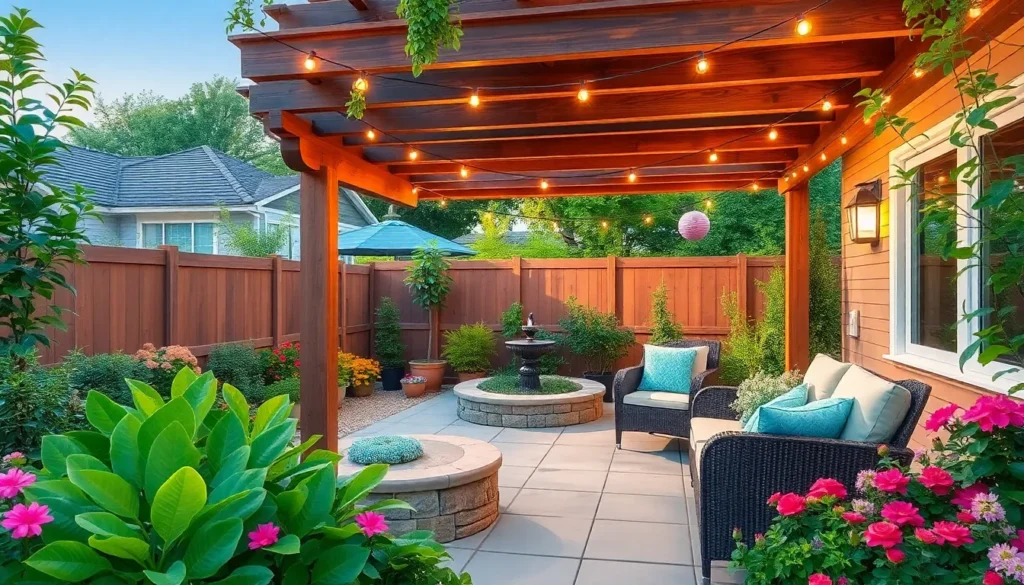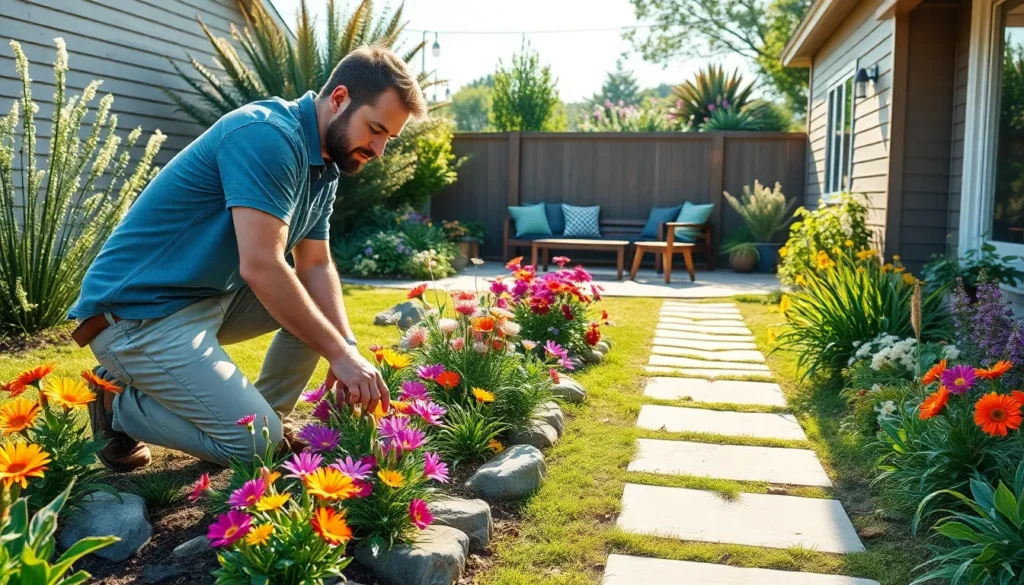A fence isn’t just a boundary; it’s a blank canvas waiting for a splash of personality. Whether it’s a picket fence that’s seen better days or a sturdy wooden barrier ready for a makeover, a fence painting project can transform the mundane into the magnificent. Imagine neighbors peeking through their curtains, wondering if you’ve hired a professional artist or just unleashed your inner Picasso with a paintbrush.
But before diving into the paint bucket, it’s essential to plan wisely. From choosing the right colors to mastering the technique, every detail matters. Not only will a fresh coat of paint enhance curb appeal, but it’ll also protect the wood from the elements. So grab your paintbrush and let’s turn that fence into a masterpiece—because who said home improvement can’t be a little fun?
Overview of Fence Painting Projects
Fence painting projects transform ordinary barriers into vibrant expressions of personal style. Choosing the right color plays a crucial role in achieving the desired aesthetic appeal. Each shade affects how a fence complements the surrounding landscape. Techniques for applying paint vary, with options including brushes, rollers, and sprays. Selecting a method depends on the fence material and design.
Planning the project ensures a polished finish. Proper preparation requires cleaning the fence thoroughly to remove dirt and debris. Assessing the surface for repairs helps maintain structural integrity before any paint application. Longevity of the paint relies on selecting high-quality outdoor paint specifically designed for wood.
Considering the season influences the project’s success. Warm, sunny days create ideal conditions for painting, as it allows for faster drying time. Additionally, monitoring the forecast helps avoid rain, which can ruin painted surfaces. Following up with maintenance prolongs the fence’s vibrant appearance. Regular touch-ups maintain the visual appeal and prevent weather-related damage.
Budgeting for the project includes costs for paint, tools, and optional protective gear. DIY enthusiasts often find satisfaction in completing the work themselves, but hiring professionals can ensure a flawless outcome. Friends or family can also assist, making the project more enjoyable. Ultimately, a successful fence painting project enhances curb appeal while showcasing individual creativity.
Choosing the Right Paint
Selecting the right paint is crucial for a successful fence painting project. The paint protects the wood while enhancing the overall appearance.
Types of Paint for Fences
Acrylic latex paint offers excellent durability and flexibility. Oil-based paint presents strong weather resistance and longevity. Both options work well on wooden fences, but acrylic dries faster and permits easier cleanup. For vinyl fences, specially formulated vinyl paint adheres well and prevents fading. Choosing primer beforehand improves adhesion and extends lifespan.
Color Selection Tips
Selecting the right color is essential for harmonizing with the surrounding landscape. Consider the architectural style of the house to ensure compatibility. Lighter colors can brighten spaces and create an illusion of openness, while darker colors offer a bold statement. Test small swatches on the fence to observe how sunlight affects the color. Consult color theory basics, as complementary colors enhance visual appeal and cohesion.
Preparing Your Fence
Preparation sets the stage for a successful fence painting project. Careful cleaning and necessary repairs form the foundation of a smooth and lasting finish.
Cleaning and Repairing the Surface
Start by clearing debris from the fence, including dust, dirt, and old paint. Washing the surface with a mixture of soap and water improves adhesion for the new paint. Use a pressure washer for stubborn grime or mildew. After cleaning, inspect the fence for cracks, broken boards, or signs of rot. Perform repairs as needed to ensure a sound base. Fill small holes with wood filler and replace any severely damaged sections. This attention to detail guarantees a flawless and durable paint application.
Tools and Supplies Needed
Gather essential tools before beginning your project. A high-quality paintbrush or roller applies paint evenly, while a spray gun offers a faster option for larger areas. Include a paint scraper for removing loose paint and a pressure washer for deep cleaning. Don’t forget painter’s tape, which protects adjacent surfaces from unwanted splatters. A drop cloth keeps the area tidy, catching drips and spills. Proper supplies, such as exterior paint suitable for fences, ensure the project’s success and longevity.
The Painting Process
Successfully painting a fence involves several key techniques and tips to ensure a polished and long-lasting finish. Carefully selecting the right method makes a significant difference in the overall appearance.
Techniques for Applying Paint
Brushes, rollers, and sprayers each offer unique advantages. Brushes excel at detailed work and can reach into tight corners. Rollers cover large areas quickly, making them ideal for flat surfaces. Sprayers create an even coat and are perfect for complex designs, but they require more preparation and protection for surrounding areas. Start with a coat of primer if the fence is bare wood, as this enhances paint adhesion and color vibrancy. For stains, choose a stain-grade applicator which ensures optimal absorption and finish.
Tips for a Professional Finish
Achieving a professional look requires attention to detail and a systematic approach. Always start with clean and dry surfaces; this allows paint to adhere properly. Use painter’s tape to create sharp lines, particularly where the fence meets adjacent surfaces. Apply paint in thin layers, avoiding heavy coats that can lead to drips. Always allow ample drying time between coats, ensuring each layer sets correctly, which contributes to durability. Consider working in sections to maintain control over the application. Regularly check for imperfections and touch up as needed to enhance the overall aesthetic.
Maintaining Your Painted Fence
Maintaining a painted fence ensures its longevity and vibrant appearance. Regular upkeep keeps wood protected and adds to the overall aesthetics.
Regular Maintenance Tips
Inspect the fence quarterly for any signs of wear or damage. Cleaning the surface with soap and water prevents mold and mildew buildup. Removing debris promptly keeps the paint from deteriorating. Touching up scuffs or scratches immediately prevents further damage. Reapplying a clear sealant every few years enhances protection against weather. Checking the surrounding area for invasive plants also helps maintain clean lines. These actions contribute to preserving the fence’s appearance and durability.
When to Repaint
Repainting is necessary when the paint shows significant fading or peeling. Experts recommend repainting every 5 to 7 years, depending on climate exposure. Noticeable discoloration indicates the paint no longer provides adequate protection. A thorough inspection post-storm or extreme weather can reveal damage early. Matching the original paint color during touch-ups maintains a uniform look. Timing the repainting process for dry days enhances adhesion. Choosing a quality paint ensures the fence remains visually appealing and protected longer.
Conclusion
A well-executed fence painting project can dramatically enhance a property’s appeal while reflecting personal style. With careful planning and the right techniques, anyone can turn a simple fence into a stunning visual statement. Choosing the appropriate paint and colors is crucial for both aesthetics and protection against the elements.
Regular maintenance ensures the fence remains vibrant and functional for years to come. By following the outlined steps and tips, individuals can achieve a professional finish that not only beautifies their outdoor space but also adds value to their home. Embracing this project allows for creativity and satisfaction in transforming a mundane structure into a work of art.













